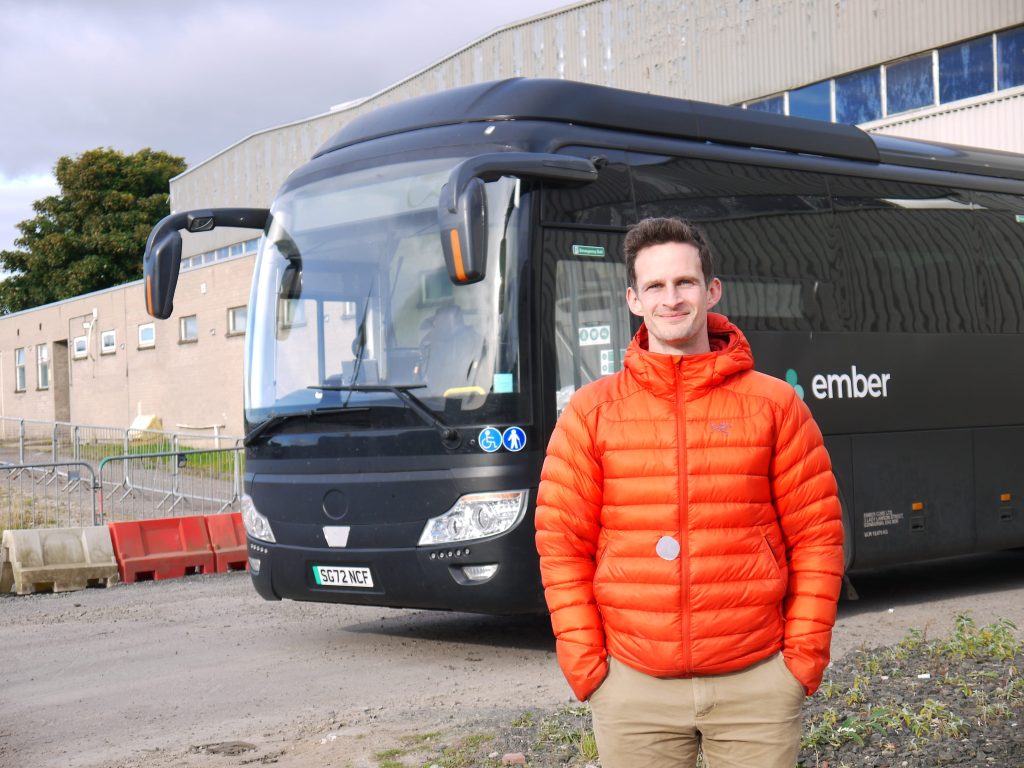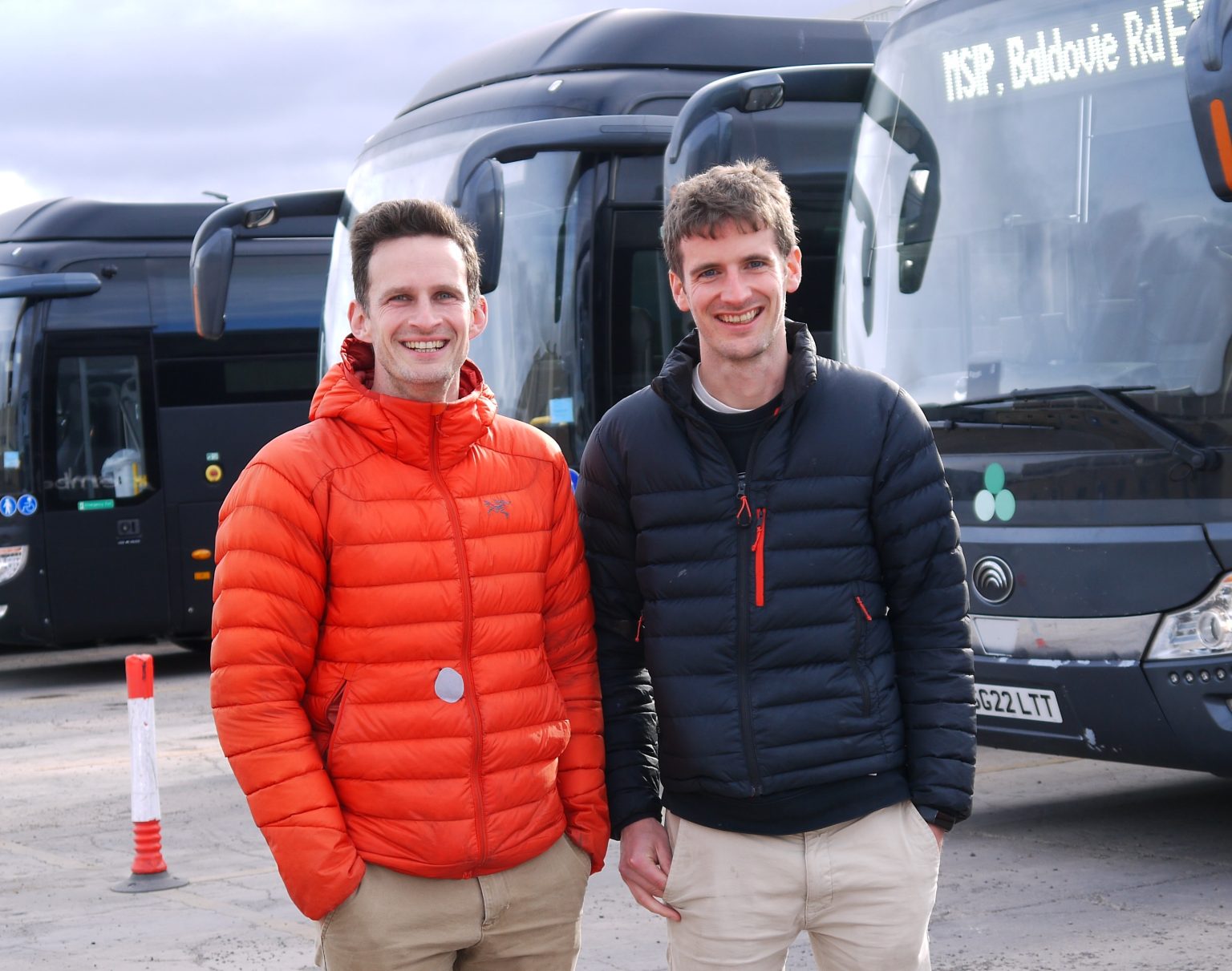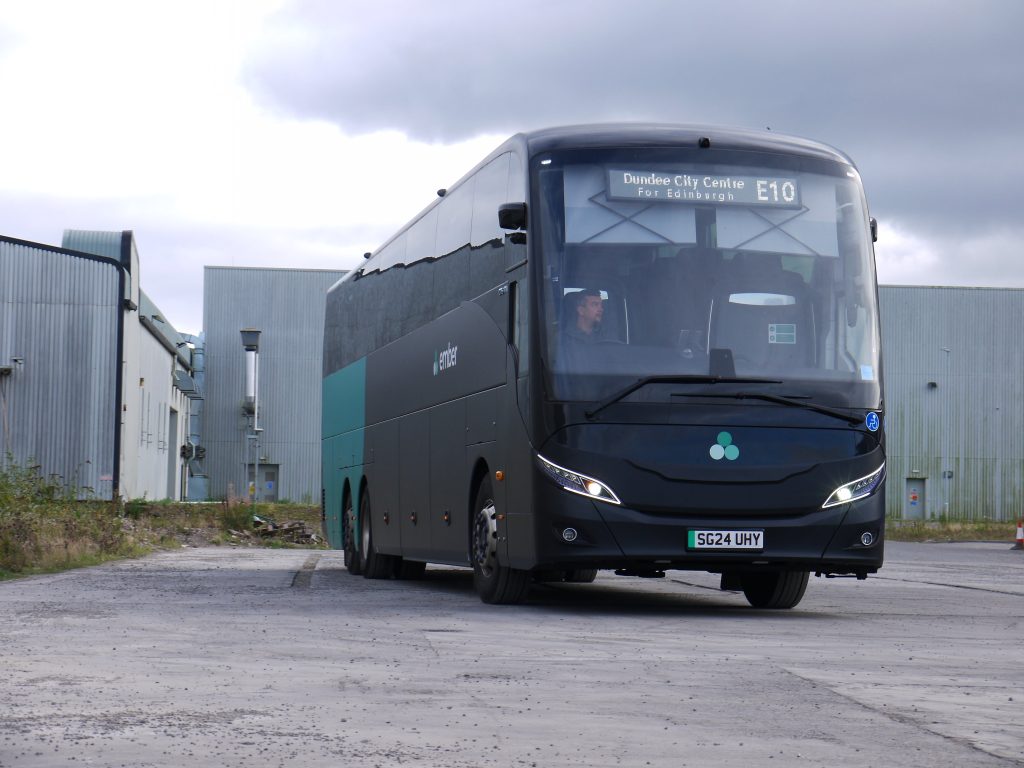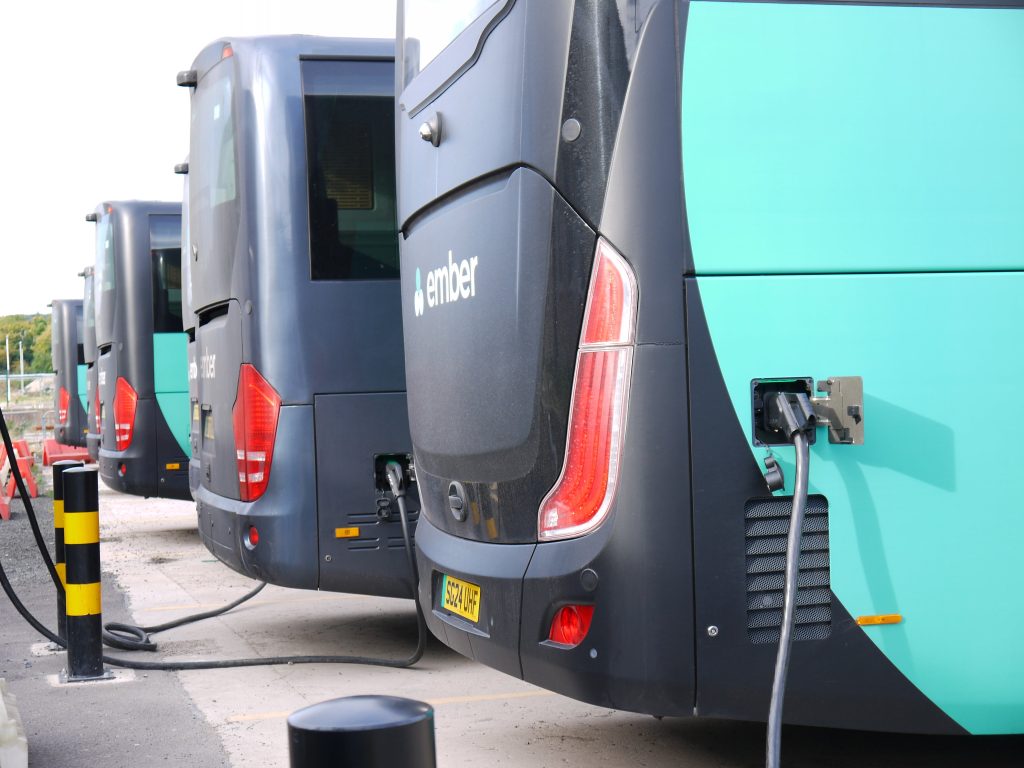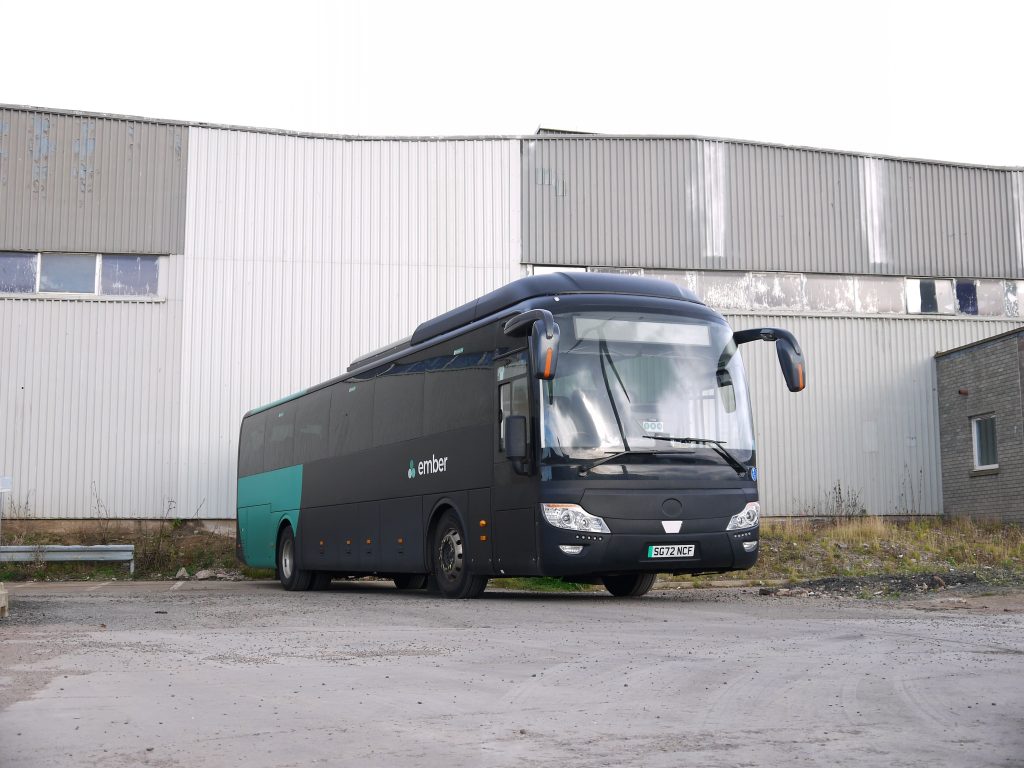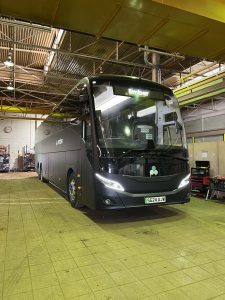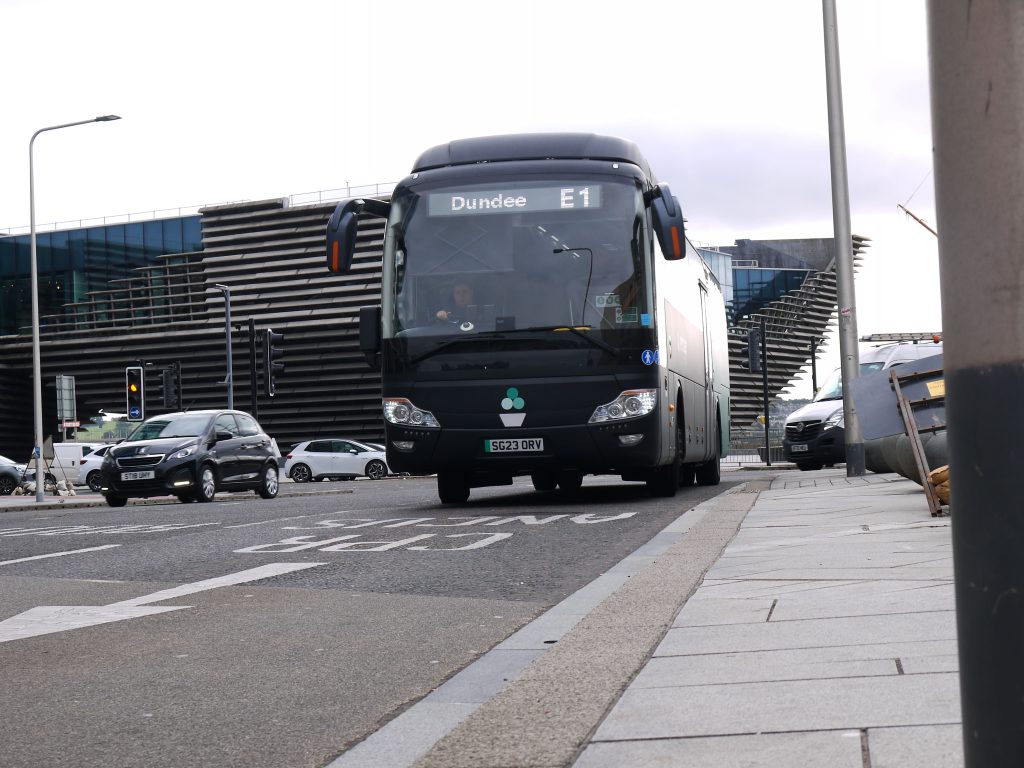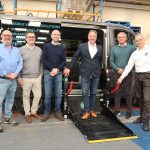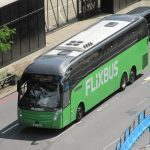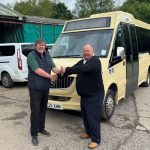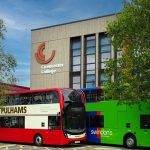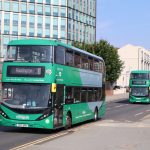If Ember founders Keith Bradbury and Pierce Glennie needed any further endorsement that they had hit on a good idea, they received it this summer by being named the biggest beneficiaries of the second tranche of the Scottish Zero Emission Bus challenge fund, ScotZEB2.
That Ember has become the darling of ScotZEB2 should come as little surprise given the trajectory of its growth and the fact it owes its presence in Scotland to the country’s ambitious targets for public transport decarbonisation. When routeone first visited the company at its head office in Edinburgh in 2022, Keith and Pierce recognised that the benefits of its operating model would only be realised with scale — but acknowledged there would be no growth for growth’s sake. Expansion follows refinement, and with the latest funding round, Ember has the opportunity to demonstrate those efforts.
Iterative improvements
From its two Yutong TCe12s put into service in 2020, the company now has eyes not just on the introduction of 100 further zero-emission coaches scheduled for phased introduction in 2025 and 2026, but, following conclusion of ScotZEB2, an ambition to introduce up to 100 vehicles per year to its network. Accompanying them will be associated charging sites.
Understanding how Ember plans to accommodate that growth brings us to the company’s depot at the Michelin Scotland Innovation Parc (MSIP) in Dundee. Ember moved into the site in late 2022 with a single charger and bay. It expanded to its current yard late last year, and at the beginning of September opened its first in-house maintenance facility.
Dundee has been a cornerstone in Ember’s holistic zero-emission approach. When the company leased its corner of MSIP, it tapped into energy supplied by one of the parc’s wind turbines, which once provided energy for Michelin tyre production. Of the 10MW available across the parc, Ember utilises about 1MW of a 3MW supply delivered by its connection.
MSIP is well established as a greenfield regeneration site in the area. Keith says Ember, unlike some, was keen not to wait until that regeneration was complete. “We wanted to move in at the first opportunity and set something up even if it wasn’t perfect,” he says. “MSIP appreciated us being able to make use of the connections while providing transport to the site. We have the flexibility to move and evolve. We’re not guiding the wider regeneration, but this is a good place to experiment.”
Consolidation is the current focus for Ember’s Dundee site. Consequently, it is akin to a museum for the company, insofar as it acts as a testing ground for progress and bears the remnants of its trials. Success for Ember is borne out of being able to experiment with things quickly. Dundee has been a boon; it is an area more comfortable with change than many parts of the UK.
Chargers are one example where the company has made iterative improvements. From using a council-provided SWARCO charger near Dundee railway station in 2020, Ember installed 300kW, liquid-cooled, Alpitronic chargers for its Dundee yard in 2022. But a need to share power dynamically between the chargers was identified, so a new solution was found for Ember’s latest site in Aberdeen. When it was discovered that the new chargers’ sharing capacity was limited to 600kW, a new, custom solution was sought from a startup in Nanjing called AE System Technology.
“It’s good to see that kind of progress,” Keith says. “It doesn’t feel like that long ago that we only had two coaches. I wouldn’t say we had no idea what we were doing, but we had much less idea. But the progress is visible when we see Aberdeen. That’s a fresh start — we knew what we were doing from the beginning there. In another two years we’ll be looking at more progress made on vehicles, on charging, on tech.
“Seeing the progress for me is a good thing, and even though better technology keeps emerging, I’ve never had the attitude that we should have waited. It’s great that we got started when we did. It all works, and I can see progress on how we’re going to be getting better in the future.”
Adds Pierce: “We see people not making a move because they have a ‘wait and see’ attitude. Consequently, those people continue to buy more diesel vehicles in the meantime. We may not know exactly what technology will look like in 10 years’ time, but we know for sure it is not going to be diesel.”
In-house maintenance
The maintenance facility acquired in September is a temporary measure while the site evolves, and Ember builds a clearer vision of its expansion plans.
Ember’s tech systems determine how the company schedules and plans for maintenance, and how it handles predictive maintenance. “We want to do our own,” Keith says. “That’s how you get the best out of the vehicles; the highest uptime, the longest life, the best understanding.” Upgrades are central to those efforts. Ember is currently rolling out charging upgrades across its fleet, and its maintenance team, with Yutong’s support, are encouraged to experiment; the antithesis to a prevailing idea that electric vehicles are “hands-off” for their owners. “A lot of people seem to think you’re not supposed to touch the electrical stuff,” Pierce says. “But we wanted to think of it as an upgradeable component — and our maintenance team appreciate being able to get hands-on.”
The GTe14s, for example, can charge at 600kW, though that relies on dual charging. An adjustment to the voltage distribution means the vehicle can accept that. Yutong has worked with battery manufacturer CATL to deliver that capability, though it is not an off-the-shelf product yet. Ember is believed to be the only company making that upgrade itself, with Yutong’s support. By disconnecting the pantograph connection already fitted to the vehicle and running additional cables through the pantograph ports, power going into the battery maintenance system is doubled from 250amps to 500amps.
Rapid growth
Ember never sees anything as an end product, nor does it acknowledge the existence of a perfect vehicle. It already has plans for improvements to the 100 vehicles coming through ScotZEB2. It also wants to get ahead of the next generation of vehicle beyond those.
To accommodate running 140 vehicles, Ember has identified many sites for growth and a number are already being actively worked upon. Aberdeen comes next, and upgrades have been made to accommodate a site in Inverness with plans for a Thurso site by the conclusion of ScotZEB2. Those will join routes and charging hubs from Edinburgh and Glasgow to Oban and the Isle of Skye, connecting Scotland from north to south and east to west. Keith and Pierce are confident Aberdeen to Edinburgh will be the longest scheduled electric service in the UK. “It’s hard to make these claims,” they admit, “but we can’t think of anything remotely comparable.”
There’s a concept of “hubs” to consider. Inverness will be such one, with a wash bay, site building, charging points. Hubs will be supplemented by chargers and dedicated bays in other sites that act as a terminus point where vehicles can commence routes and recharge. Fort William, for example, will have a high-speed charger in an existing coach park.
The search for sites in England is also active as part of those expansion plans. Keith and Pierce are coy about where that will lead them.
“We have a very full pipeline of charging sites that we’re working on now. And then as we think about beyond Scotland and the rest of the UK we have flexibility on where we can go. Identifying a site similar to Dundee in England means we can be much more flexible about moving quickly. That’s a big benefit to our operating model. We have that flexibility built in, because we’re an expanding and scaling business.
“We’re on the hunt. But, if you imagine a site in Manchester, that could link to Glasgow, London or Bristol. Conversely, from Bristol we can reach Manchester, Sheffield, London, and Cornwall.”
Built to be international
ScotZEB2 is defined by route expansion for Ember, and hitting the right service frequency. The Aberdeen timetable will officially launch on 22 October with an hourly frequency and may increase with demand. Keith and Pierce say there are many areas that can launch at that level to be refined later. What it does not want is three-hourly frequencies, and passengers complaining when they miss their only coach for the day.
A point Pierce emphasises is the impact that those frequencies are having on modal shift. Prior to Ember launching its Edinburgh-Dundee route, a competitor operator ran what was just under an hourly service, with 15-20 vehicles in each direction per day. Now, there are closer to 45-50 combined services a day. Come 22 October, an increase
of routes will roughly double Ember’s frequency again, meaning 60-70 combined services between it and two other operators.
“You can look at that, and think it’s crazy growth,” Pierce adds. “Is that the worst of the bus wars race to the bottom? I don’t think so, because a lot of people are filling up the buses. This has driven an increase in service provision, and increased passenger numbers on that corridor. It’s not that our vehicles are running empty — in fact, our passenger numbers are higher than they have ever been historically. An increase of frequency and convenience can drive a shift.”
Is Ember ready for the growth to come from ScotZEB2? “It’s always hard to know,” Keith says. “But you can have confidence that you’ve done the planning and put the building blocks in place. “Going from nothing to two vehicles was pretty hard, but going from two to 40 vehicles is probably harder than going from 40 to 80 vehicles. When we get to 150 vehicles, growing to 500 will be a different type of challenge, but we’ll have the foundations to do that. That’s what we’re trying to build in now.
“When we first launched Ember, we said we wanted to reach 1,000 vehicles. The EmberOS side was designed to accommodate that. This is not a system just for Scotland, or a fleet of 40 coaches, or to support a coach structure in the UK alone. This is built to be scaled, and to be international. That side of things has been in place from the beginning.
“We might not have had the vehicles, or the charging to take us to that number, but our tech system does. From a design and systems perspective, we’ve always been building for this scale, which is why the journey has felt both slow and fast.”
Its growth and iterative improvements have also meant Ember has trained, and will likely continue to train, on multiple brands. “There’s that pain, but we want to take on that pain for the sake of building something truly scalable,” Keith says. “I don’t think that is common in the coach and bus industry, just as I don’t think there have been many businesses that, from the outset, wanted to be a big company like us.”
